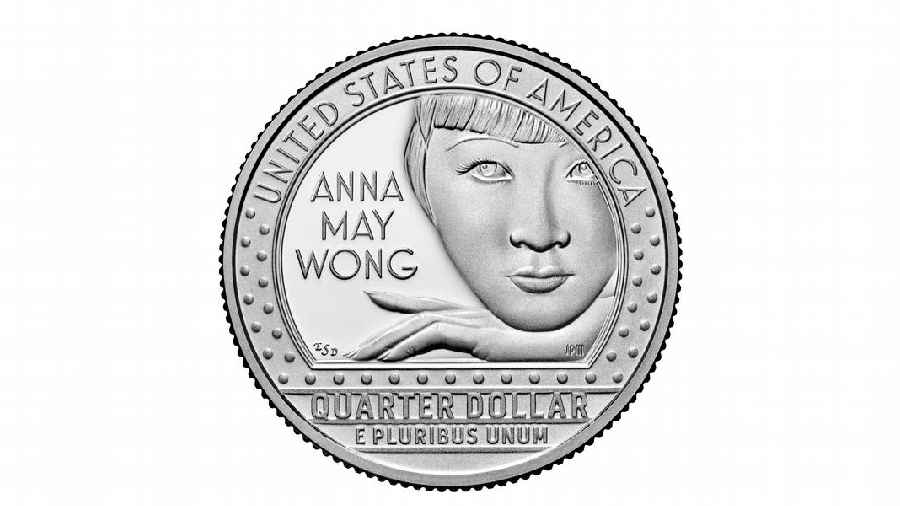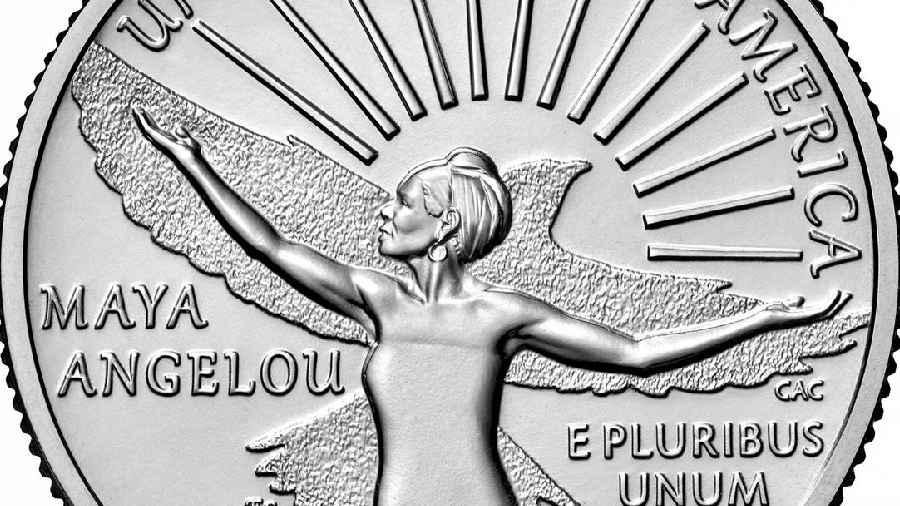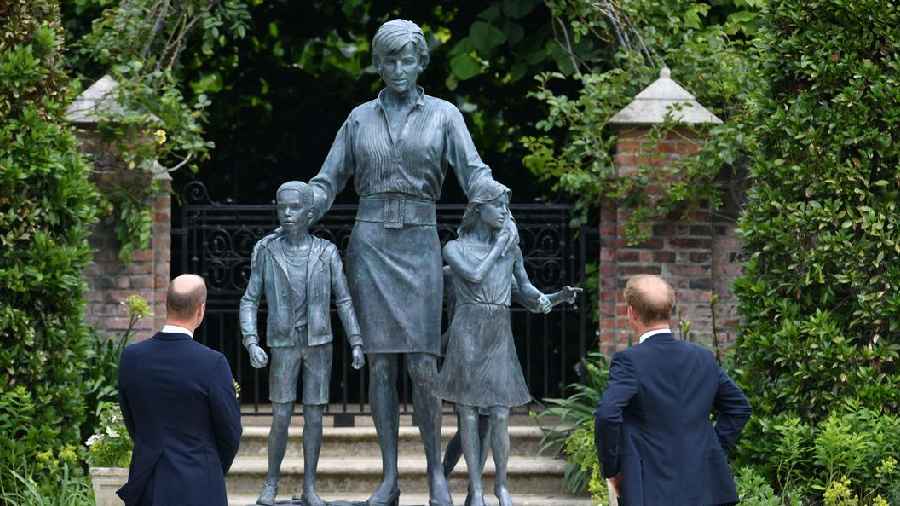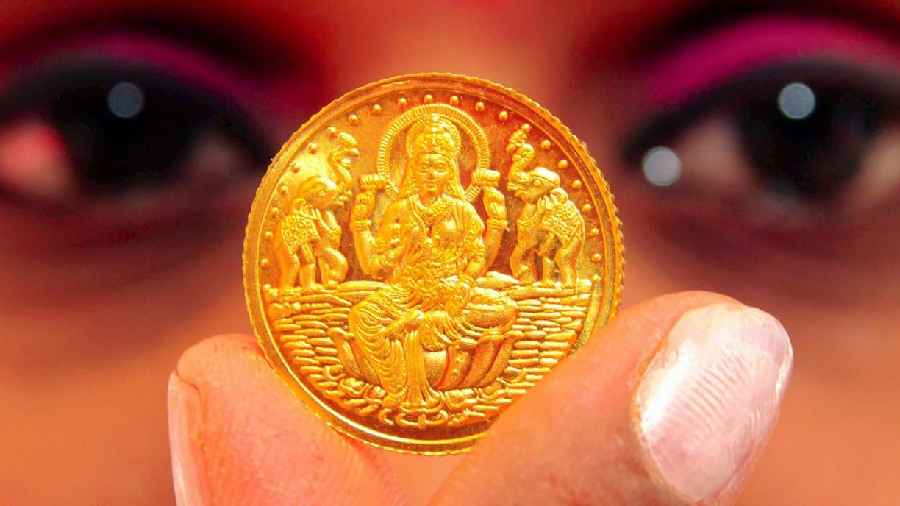Anna May Wong, who was the first Chinese American film star in Hollywood, becomes the first Asian American to be featured on US currency. Her face is to appear on 25-cent coins starting October 24.
Wong, who worked in Hollywood during a time of open racism and stereotyping, broke ground in her acting career that ranged from silent cinema through the talkies, to the golden age of Hollywood.
Her first lead role was in the 1922 film "The Toll of the Sea," and she later appeared alongside Douglas Fairbanks in "The Thief of Bagdad" (1924) and Marlene Dietrich in "Shanghai Express" (1932). She starred in the first US television show to have an Asian American lead, "The Gallery of Madame Liu-Tsong," in which she played a Chinese detective.
After facing discrimination in the US, she embarked on a career in Europe to work in English, French and German films.
Acting in more than 60 films in her career, she reaped a star on the Hollywood Walk of Fame in 1960, yet died the following year aged 56.
Wong is also remembered as a fashion icon, with her signature bangs and long fingernails featuring on the US coin.

Anna May Wong on the US quarter-dollar coin Deutsche Welle
An array of accomplished women
The Wong coin is the fifth this year as part of the American Women Quarters Program, which was launched in January 2022 with a coin paying tribute to African American poet Maya Angelou.
Angelou fought alongside civil rights activist Martin Luther King for equal rights for Black people in the United States. She died in 2014.
The January-issued quarter-dollar coin honoring her made her the first African American woman to receive such a tribute.
The special mintage series titled the "American Women Quarters Program" consists of 20 depictions honoring women's achievements that will be completed by the US Mint by 2025.
Angelou's coin image is a reference to the activist, poet and author's 1969 autobiographical book, "I Know Why The Caged Bird Sings," in which she chronicles her life growing up in the US during segregation.
Maya Angelou depicted on new US quarter coin with her arms open wide and a bird stretched out behind her.

Activist and writer Maya Angelou depicted on new US quarter coin Deutsche Welle
There are a host of milestones in the series: Astronaut Sally Ride is the first lesbian woman to be depicted on US money; civil rights activist Nina Otero-Warren is the first Hispanic woman; likewise Wilma Mankiller is the first female principal chief of the Cherokee Nation.
Women depicted on coins for 2,500 years
The decision to depict minorities on 25-cent coins shows that the US "has developed an awareness of the diversity of society, for which America can only be congratulated," says Bernhard Weisser of the Numismatic Collection of the National Museums in Berlin. That minorities like Maya Angelou are depicted on currencies is a historical novelty, he adds.
Historically, coins have served rulers to convey their "ideals and ruler virtues to the users — that is, their population, and their soldiers," the expert points out.

Queen Arsinoe II of Egypt is one of the first known historical women depicted on a coin Deutsche Welle
Female figures on coins, on the other hand, have been around ever since there has been minting. From goddesses in Antiquity to rulers in the Renaissance, to leaders in modern times, many female figures have been immortalized on coins.
But the oldest known coins depicting actual people showed the likeness of a man. "As of 525 BC, the King of Persia was depicted on coins," Weisser says.
Yet women were also involved in the picture early on.
"With a view to the first representation of a female ruler, we head to Africa," Weisser says.
One of the first women of historical note to be immortalized by coinage was Ptolemaic Queen Arsinoe II of Egypt, in the 3rd century BC.
Coins minted as a symbol of power
Since then, women have been depicted on many national currencies either during their lifetimes or posthumously.
The female figures depicted on money have, until this day, primarily been political leaders: from Cleopatra VII (69-30 BC) to Queen Naganika, who was one of the first women in the history of India to direct the affairs of a state in the 1st century BC, to the Empress of the Holy Roman Empire Maria Theresa (1717-1780) — all of them issued coins featuring their likenesses.
The latter "created a thaler that enjoyed great popularity in Africa," Weisser said. "This thaler was reissued in Vienna until the 20th century."
Female rulers, like their male counterparts, wanted to use their images on coins to legitimize their rule and assert their influence on nations and empires. The best-known example is likely the portrait of Queen Elizabeth II, who is still depicted on numerous coins in the Commonwealth today.
Goddesses on coins
But not only real women had their faces minted on the coins of their empires.
Ancient empires, such as that of Greece or of the Kushans in Central Asia, were the first to depict female deities on their coins. While Greek rulers sought to portray the goddess Athena in various poses, the Kushans imprinted the goddesses Lakshmi and Ardochsho on their coins. In India, the goddess Lakshmi was long the most frequently depicted deity on coins.
Goddesses are rarely found on coins today, but other female figures that serve as allegorical personifications do appear — think of the French Marianne, the Peruvian Madre Patria, and Lady Liberty in the United States.

The French version of the notion of 'liberty': Marianne Deutsche Welle
Strong women on modern currency
Since the 20th century, there has been a trend toward recognizing women for their contribution to society. Examples include the popular former First Lady of Argentina, Eva Peron (1919-1952), whose portrait is still in circulation today on a special peso coin, and former Indian Prime Minister Indira Gandhi (1917-1984). Both were posthumously depicted on national currencies.
These coinages were intended to commemorate the women's political leadership roles and to cement their place in their countries' history.
In recent years, however, governments have also begun to recognize women beyond the political realm. Lady Diana, Princess of Wales, had a range of coins dedicated to her.

Deceased Princess Diana was also immortalized in a statue unvieled in 2021 Deutsche Welle
Ever more women are also being recognized for their contributions to the arts and sciences. In addition, as in the case of Maya Angelou, states are increasingly recognizing the role of women activists, reflecting changes in society.
"In more recent times, women who have been paid tribute on coinage were, for example, active in the charity sector or were involved in raising children. But these were rather one-sided depictions of women — that is gradually changing," says Weisser.
So, the American Women Quarters Program coin series is in keeping with the times.
However, the female artists, activists and scientists depicted on them still have to share the coin with a man. On the "head side" of the coin, the first president of the United States, George Washington (1732-1799), is still depicted.
From Deutsche Welle newsfeed











